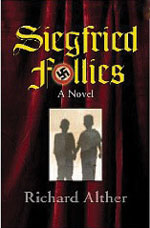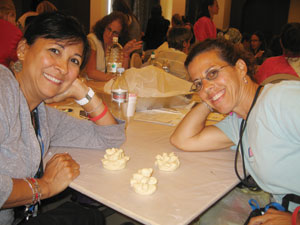Community: How it has changed, what it looks like today
I recently returned from a conference with colleagues from similar-sized Jewish Federations around the country. We continued some difficult conversations about how the Jewish world has changed and how Jewish Federation can manage that change.
All 19 communities represented in our group are dealing with change: Change coming harder and faster than we have ever seen before. It is driven by economic and political instability and technological, demographic and generational shifting. Some old institutions are beginning to crumble. New organizations are struggling to exist. And a change of thinking and behavior for those under 45 is enveloping us all.
At one time, the Jewish Federation’s primary focus was raising dollars to rescue and resettle Jews in the United States and Israel. Many of our institutions were created to handle the immigrant influx: JFS, JVS and JCCs which served as the hub of “Americanization,” grew from these needs. During this era, our donors willingly supported these newcomers, many of whom were relatives. The newcomers, in turn, supported later waves of immigrants, and fed the growth of our synagogues and organizations.
Fast forward to the beginning of the 21st century: The children, grandchildren and great-grandchildren of these immigrants are making their mark. They are inhabiting a different world — one in which they have economic means, social stability and a society (at least in North America) that is totally open to them. In Israel, which is still threatened by conflict, there is a high-functioning technological economy that has influence far beyond the Middle East. Rather than working to Americanize Jews (as in the past), we are working to make them more Jewish. There are very few threatened populations which require a wholesale move to the promised land. And major conflicts between Israel and the Palestinians are no longer garnering universal Jewish support.
We are a culture defined by individualism. A philosophy of philanthropy once guided by a feeling of responsibility to one another is now guided by the personal cause of the month.
We believe in individual donor choice. Which means umbrella, and therefore, Jewish Federation giving, have lost favor.
So what does this mean as we move forward? Can we still have a community? Is mutual responsibility dead? Can we experience a meaningful Jewish peoplehood? Does support for the particular mean no support for the greater?
Moving Forward
At issue, for all Jewish organizations, is how we do what we do, when we do it, and how we derive our community support. And how it fits into today’s society.
As I stated earlier, Jewish Americans have become American Jews. We succeeded in what we set out to do. So the purpose of our organizations and the resulting programs need to change for us to stay relevant. But change now happens overnight. This, combined with the fact that Jews are free and welcome to participate almost everywhere, including the virtual world, makes it an ever-present challenge to remain current and relevant.
What does all of this mean?
To meet the vastly changed landscape of community, the Jewish world and those of us who work within it, are compelled to do what we do differently. We have to be more nimble as organizations, embrace groups outside our usual circle and make new technology work for us. Some institutions will not survive these times. Others may become dramatically different. History has shown us to be a remarkable people. Despite slavery in Egypt, exile in Babylonia, pogroms, the Holocaust and attacks by numerous Arab armies and terrorists, we go on. We have shared in the birth of a modern Jewish state and have, despite our challenges, developed Jewish education and culture to a level no one ever thought possible.
We will meet these challenges of today with the same intellect, creativity and sense of purpose and in the end we will provide a rebirth of our community in the 21st century.
Todd Stettner is executive vice president & CEO of Jewish Federation of Greater Kansas City.



 Cinema lovers in Greater Kansas City do not need to travel to Cannes, Toronto or Jerusalem to attend a first-class film festival. Opportunity knocks starting next weekend when local audiences can find their very own slice of film nirvana in Overland Park at the 11th annual Kansas International Film Festival (KIFF). KIFF will take place Sept. 30-Oct.6 at the Glenwood Arts Theatre located inside the Metcalf South Shopping Center.
Cinema lovers in Greater Kansas City do not need to travel to Cannes, Toronto or Jerusalem to attend a first-class film festival. Opportunity knocks starting next weekend when local audiences can find their very own slice of film nirvana in Overland Park at the 11th annual Kansas International Film Festival (KIFF). KIFF will take place Sept. 30-Oct.6 at the Glenwood Arts Theatre located inside the Metcalf South Shopping Center. In his second novel, “Siegfried Follies,” Richard Alther explores the nature of cultural and religious identity. The novel follows the intertwining lives of blonde, blue-eyed Franz and J, a Jewish boy, in Nazi Germany. The plot spans nearly 30 years, but the novel’s scope is far broader; it reaches back to the beginnings of German and Jewish culture and asks fundamental questions about nation, race and family, drawing from sources as disparate as Wagner, “Mein Kampf” and the Torah.
In his second novel, “Siegfried Follies,” Richard Alther explores the nature of cultural and religious identity. The novel follows the intertwining lives of blonde, blue-eyed Franz and J, a Jewish boy, in Nazi Germany. The plot spans nearly 30 years, but the novel’s scope is far broader; it reaches back to the beginnings of German and Jewish culture and asks fundamental questions about nation, race and family, drawing from sources as disparate as Wagner, “Mein Kampf” and the Torah. Once upon a time, Hebrew schools operated on the assumption that a working knowledge of Hebrew was such a basic skill for Jewish youngsters that they would be eager to learn it no matter how dry and formal the presentation. However, in our time, when young people live in a world where they are bombarded by all sorts of dynamic visual imagery, the traditional textbook is as outmoded as an eight-track tape. Publishers of Hebrew texts, like those of secular texts, must strive for excitement in order to compete.
Once upon a time, Hebrew schools operated on the assumption that a working knowledge of Hebrew was such a basic skill for Jewish youngsters that they would be eager to learn it no matter how dry and formal the presentation. However, in our time, when young people live in a world where they are bombarded by all sorts of dynamic visual imagery, the traditional textbook is as outmoded as an eight-track tape. Publishers of Hebrew texts, like those of secular texts, must strive for excitement in order to compete. As I stood in the arrival Hall of Ben Gurion Airport, I began to spot them. Women, without the typical “been on a plane for way too long,” glazed look on their faces. Rather, with looks of excited anticipation, lugging colorful backpacks marked with the now all too familiar letters, JWRP.
As I stood in the arrival Hall of Ben Gurion Airport, I began to spot them. Women, without the typical “been on a plane for way too long,” glazed look on their faces. Rather, with looks of excited anticipation, lugging colorful backpacks marked with the now all too familiar letters, JWRP. The “diner” notion means many things to many people. In Kansas City, Town Topic has been (for me) the “diner” gold standard — particularly since the classic Nichol’s Lunch closed years back and the venerable Corner Restaurant (in Westport) shut down, more recently. A solid diner brings to bear a certain nostalgic vibe that somehow takes patrons back to a different era. Good burgers. Better chili. Eggs. Eating at the counter. Nothing fancy.
The “diner” notion means many things to many people. In Kansas City, Town Topic has been (for me) the “diner” gold standard — particularly since the classic Nichol’s Lunch closed years back and the venerable Corner Restaurant (in Westport) shut down, more recently. A solid diner brings to bear a certain nostalgic vibe that somehow takes patrons back to a different era. Good burgers. Better chili. Eggs. Eating at the counter. Nothing fancy.